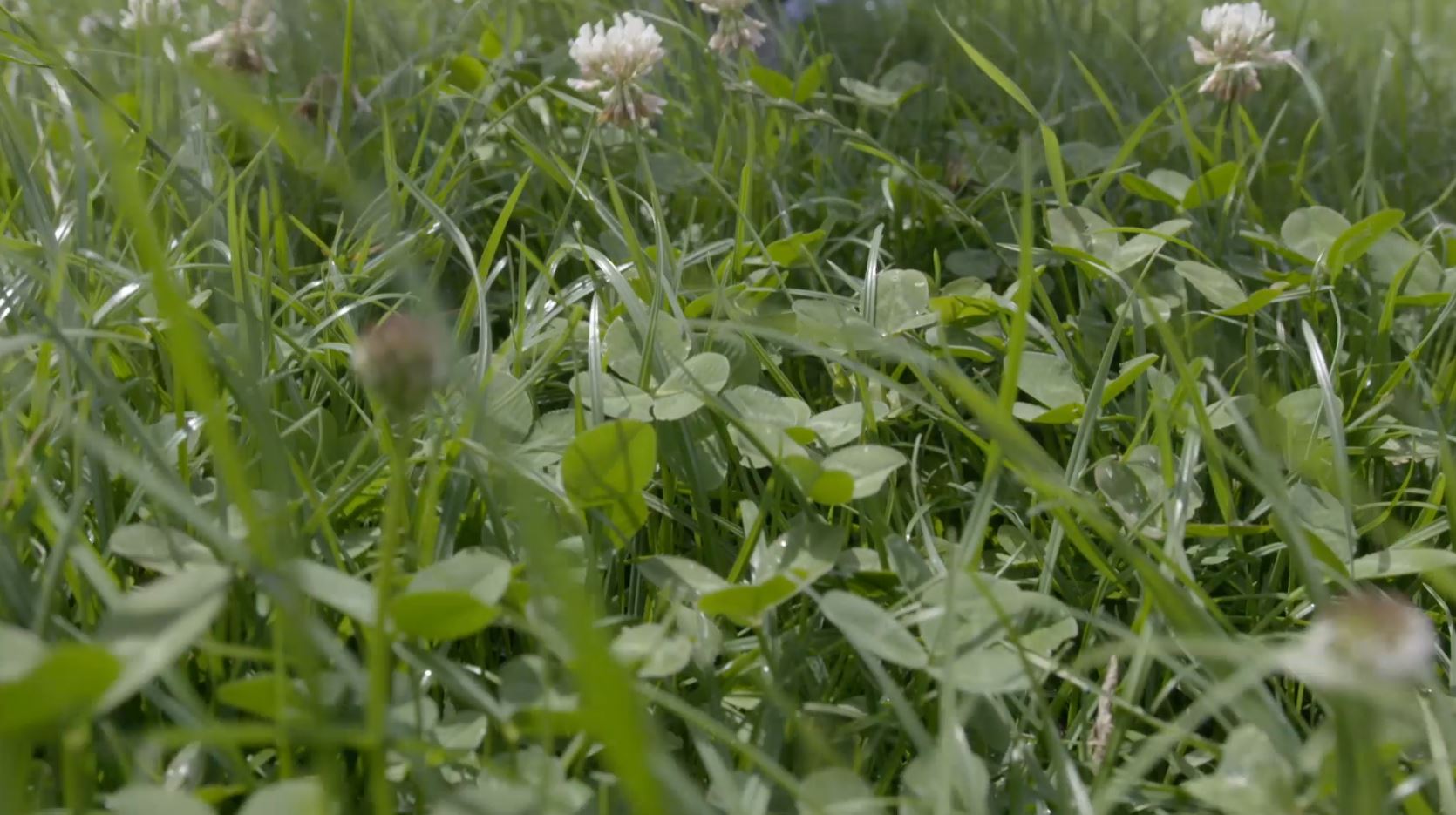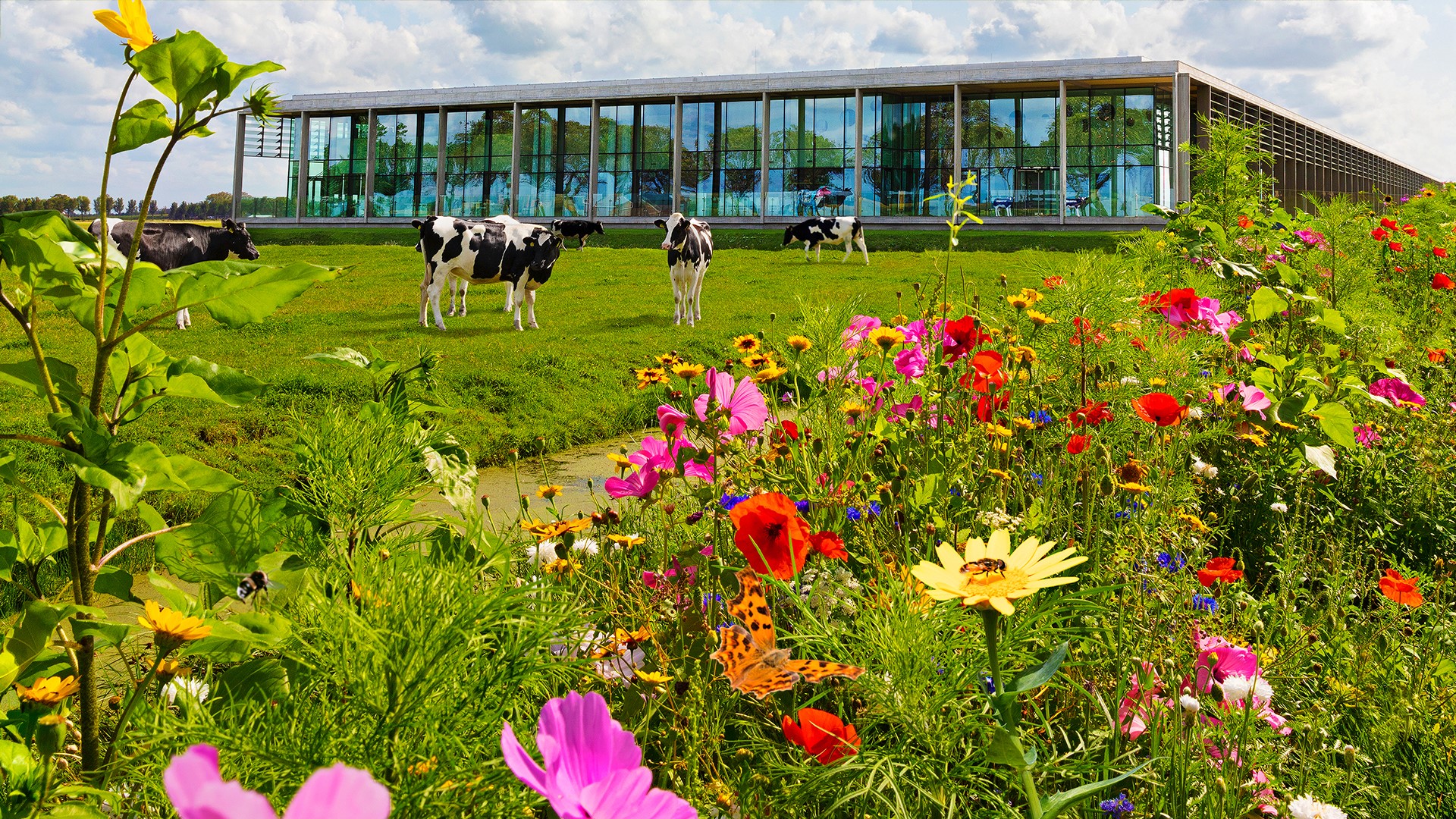Farmer Dick Ubbels opts for green management without sticks but with herbs on the grassland
Livestock farmers love their cows and the outdoors. It is logical that they also have an eye for nature management and biodiversity in and around their grasslands. Things can sometimes go crazy. Dick Ubbels, for example, has stopped putting sticks near birds' nests. And he explains why all the flowers would disappear from a colorful ribbon of bees around his meadows. In short, sustainable green management, but with a twist. A dairy farm requires a lot of land. Certainly if you are a CONO farmer, because then you let your cows graze in the meadow many days a year. You also need to grow feed for the winter season, and that takes land too. CONO dairy farmer Dick Ubbels is active in sustainable green management on various plots of land in the Wijdewormer polder. The possibilities differ per plot, he explains, depending on such factors as location, soil type and water management.

Smarter nature
Against a dike, for example, Ubbels has some eleven acres. Thanks to the tranquillity and proximity to water, lapwings, black-tailed godwits and the odd oystercatcher nest here. Together with twelve other CONO Kaasmakers dairy farmers, he took part in a pilot project to map out biodiversity, for which the farmer can be rewarded. One way of doing this is by looking for birds' nests and putting sticks next to them so that no accidents happen when working the land. "Nature is sometimes smarter than we are," "It turned out that foxes just followed my trail along all the nests and then froze them empty. Crows and jackdaws had learned in no time that sticks meant 'easy food', and were emptying the nests. Therefore we decided to stop putting sticks in the nests. And from now on we will only look at the nests shortly before mowing. This is more difficult because of the high grass, but it increases the chance of survival for the eggs and chicks considerably." In addition, Dick first mows the plots next to the fields with nests, so that the young birds have time to grow up a bit and move to the grass that has already been mowed and has become higher again. The grass where the nests were can then also be mowed last.
Grazing with sheep
Dick Ubbels strives for as many herbs as possible on his pasture so that his cattle have a varied meal. In addition, he is very reluctant to remove unwanted plants. "We have an old turf that retains a lot ofCO2 and organic matter. The first is good for the climate, the other for the quality of the feed. We don't just put the plow in there." He is also careful with machine mowing. "Once a year, twice at most, but the rest we let the sheep do. Grazing produces a much better rooting and therefore a denser turf. That's better for the cows that will be grazing on it later on and it ensures a better bearing capacity for the machines the following year." And why not a bee ribbon? "Oh yes, haha. Well, the sheep find those flowers much too tasty, so they eat everything."

